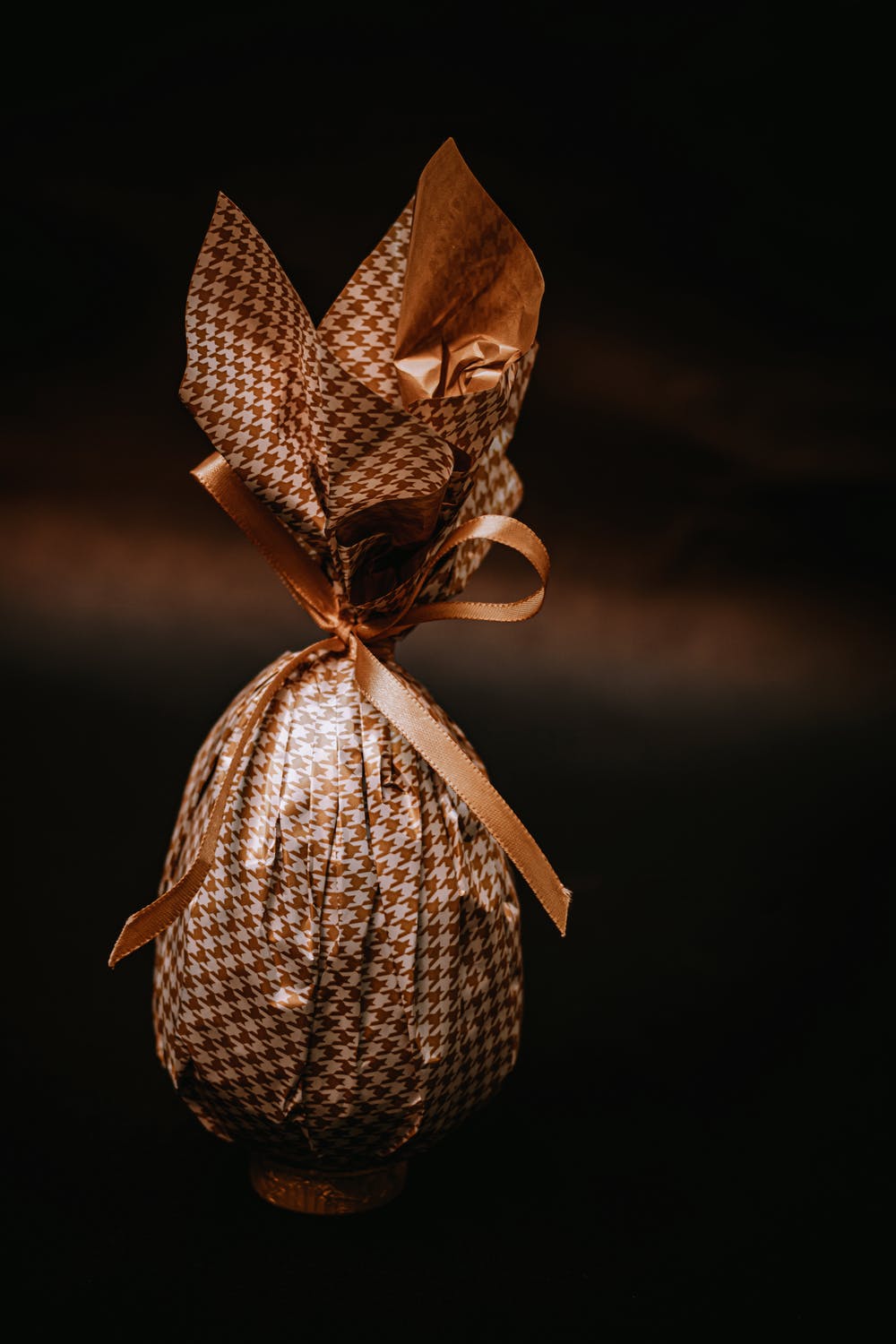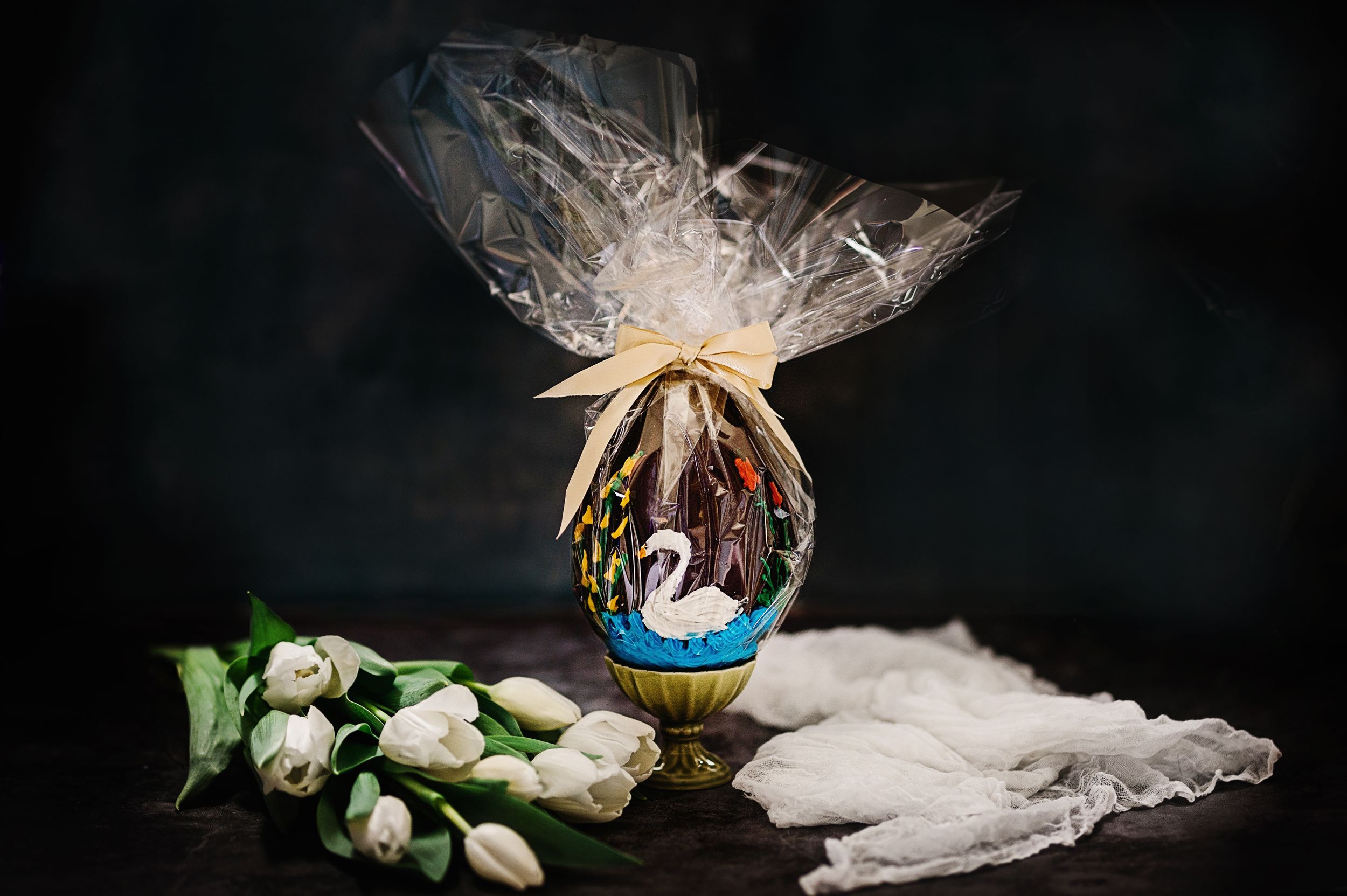L’uovo di Pasqua
In the shadow of the snow-dusted Alps, hoar frost encrusted a camper van. From within, the laughter of children permeated the walls and hovered in a still campsite. Six children—between seven and ten years old—sat crammed around a small table. Among their Uno cards and game of Battleship stood bright red, blue and green foil-wrapped packages the size of footballs.
Simone Saettone fondly reminisces about this chilly Easter in April over 20 years ago, when his Italian family and two other families camped in nearby Austria. Italians celebrate Easter and Christmas with equal gusto, and two sweets underscore the spring holiday—the first is columba, a dove-shaped sweet bread made with candied fruit and almonds (similar to panettone served at Christmas). The second is l’uovo di Pasqua, the hollow chocolate Easter eggs that sat in front of Saettone in the camper van wrapped in colourful foil.
Saettone received a brown squirrel stuffy. Italian children everywhere on this Sunday morning pried out similar gifts—decks of cards, puzzles, anything small enough to fit in the egg.
While the eggs from Saettone’s childhood represent the commercial variety, a hand-crafted variety adorns Italian bakery windows as well. These ornately decorated eggs can be much larger. One made for the Pope towered over him, and the world’s largest loomed almost three stories tall.
Now with a child of his own, Saettone lives on Vancouver Island. His parents send their grandchild an Easter parcel every year. The large box appears at his doorstep, and inside lies a columba and a foil-wrapped chocolate Easter egg.
Luckily for those of us deprived of Italian grandparents, several places on Vancouver Island prepare these delicious eggs, such as The Italian Bakery, Ottavio and Hot Chocolates.
Island-crafted Italian tradition 
The sun won’t rise for another six hours in Victoria, B.C., but pastry chef Joseph Power is already at Ottavio, a traditional Italian bakery, tempering chocolate—a difficult task on a chilly spring morning. “In a cold room you need to work faster,” says Power, who has been living baker’s hours for a quarter of a century.
After tempering, Power pours the chocolate into a mould, careful to achieve a 1/16 of an inch thickness. Once it’s cooled, Power lays one half on a cardboard rim. “If your chocolate is good,” he says, “you want that smooth touch on the tongue, crisp. And the shine, of course. The shine is what draws the eye in.”
After placing a wrapped gift inside the 16-inch-tall egg, he presses the other half’s open end against a warm baking sheet, then fuses the two halves together. Next, Power or another pastry chef hand decorates the egg with royal icing or milk or white chocolate. Finally, the egg is hand wrapped with a bow, ready to delight a child on Easter morning.
A two-and-a-half-hour drive north, in the Comox Valley, eager customers line out the door of Hot Chocolates at Easter time to purchase their eggs. “It gets crazy,” says general manager of the chocolaterie, Michele Henry. “People love them.” They make smaller eggs (six inches being their tallest), which stray slightly from Italian tradition, and their six chocolatiers fill them with candies. Though more than once, they’ve placed engagement rings inside for customers.
Unlike the North American tradition, Italian children don’t hunt for Easter eggs. As a kid in the camper van, Saettone received his l’uovo di Pasqua before lunch, the main meal of the holiday, while his parents and the other four adults visited in another camper van—likely glad to have distracted the busy children for a while.





